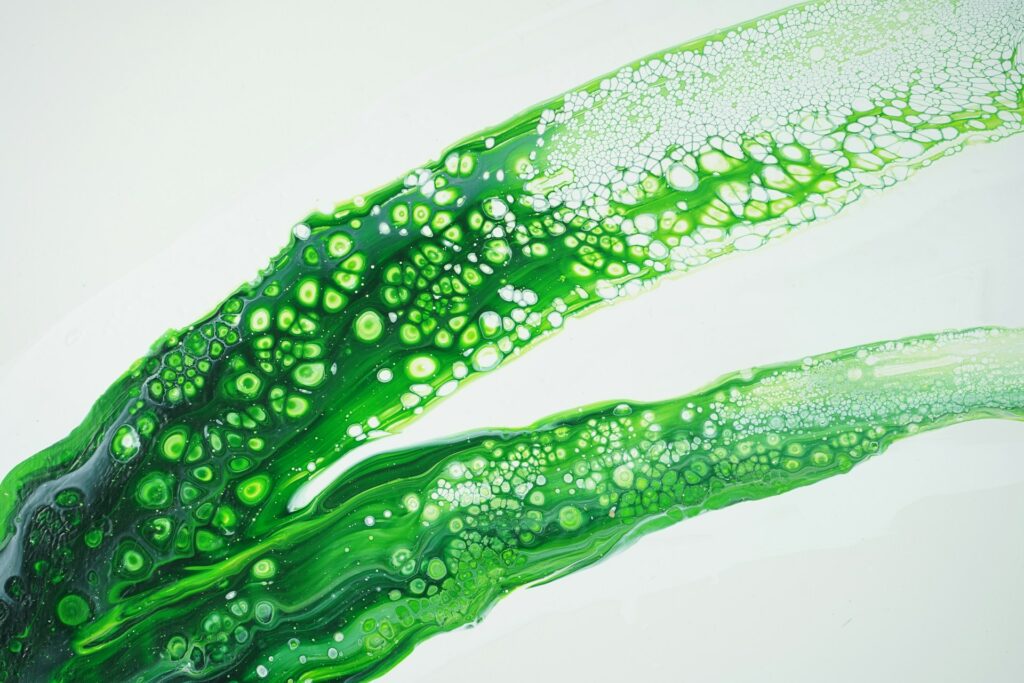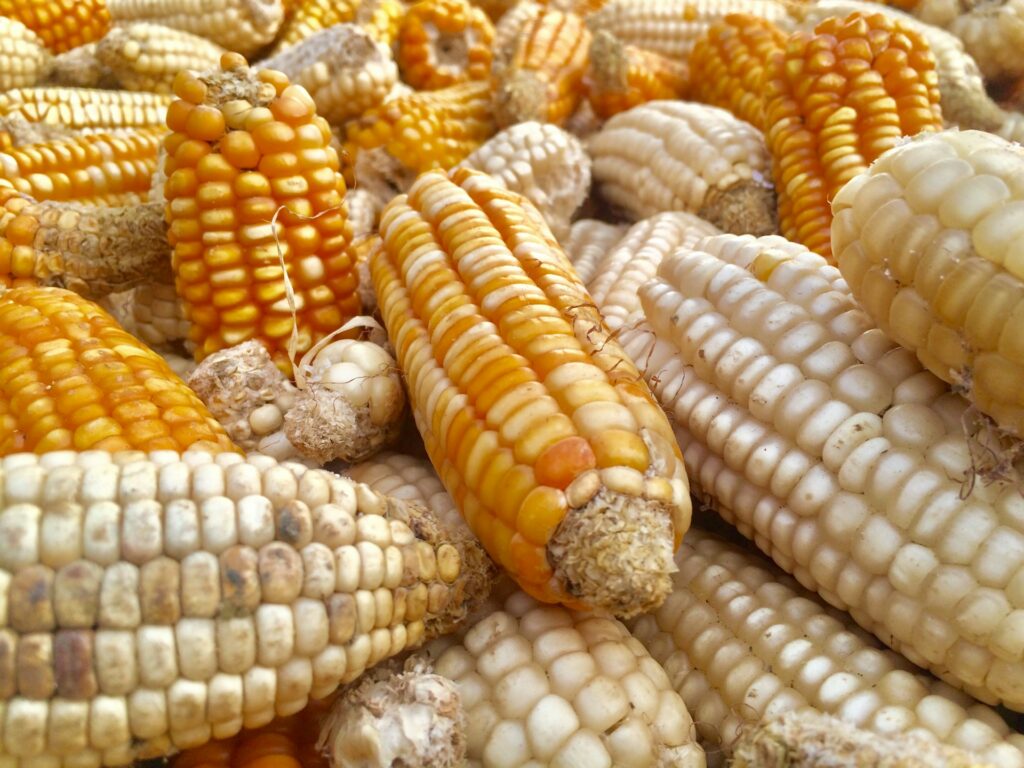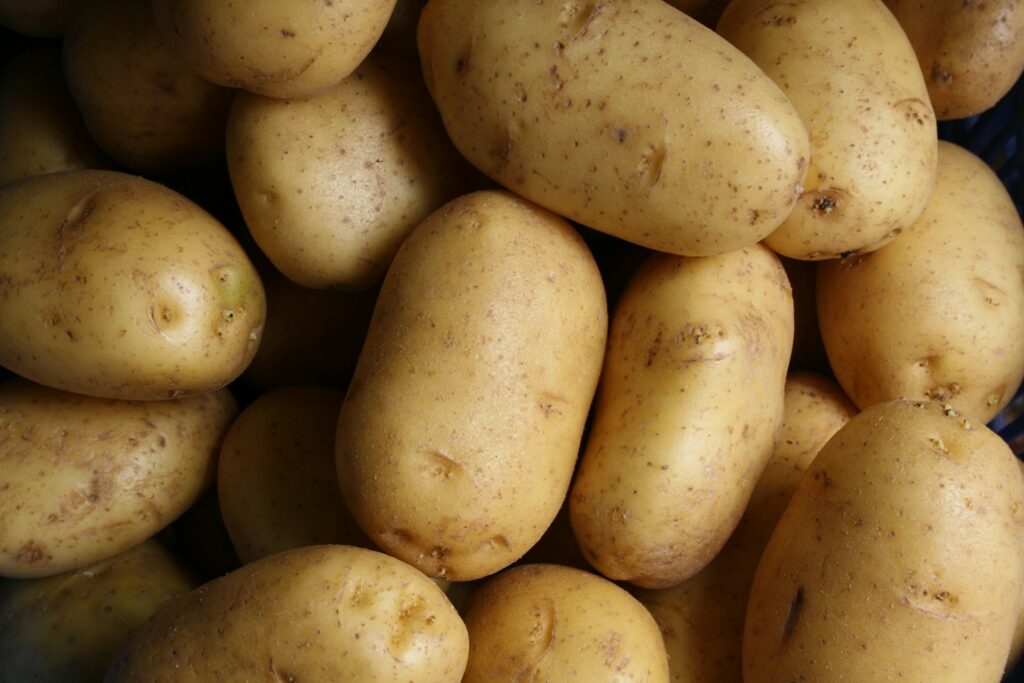Polysaccharides are essential molecules in many fields, ranging from nutrition to biomedicine. They play a crucial role in energy storage, cell structure, and various biological processes. Their chemical and functional diversity makes them compounds of interest for the food industry, cosmetics, nutraceuticals, and pharmacology. This first part provides an understanding of the nature of polysaccharides, their classification, and their fundamental physicochemical properties.
YesWeLab offers a complete range of analyses to characterize these molecules, guarantee their quality and meet the regulatory requirements of manufacturers.
Table of Contents
Definition and classification of polysaccharides
What is a polysaccharide?
Polysaccharides are carbohydrate polymers monosaccharide units (saccharides) linked together by sugar bonds . Unlike monosaccharides (such as glucose) and disaccharides (such as sucrose), which are simple or short-chain sugars, polysaccharides are complex carbohydrates forming long and often branched structures.
These molecules can be composed of tens to several thousand sugar units, giving polysaccharides specific properties , such as water retention, viscosity and gel formation.
There are two main categories of polysaccharides:
- Homopolysaccharides , consisting of a single type of monosaccharide. Examples: starch and cellulose (composed only of glucose).
- Heteropolysaccharides , which contain several types of monosaccharides. Examples: hemicelluloses and glycosaminoglycans. Pectins, rich in galacturonic acid , are particularly used in the food industry for their gelling and thickening properties .
Polysaccharides perform different biological functions depending on their structure and degree of branching. Some are digestible (starch, glycogen), while others are not and act as dietary fiber (cellulose, pectin).
Among them, beta-glucans are particularly studied for their immunomodulatory properties and their beneficial role on cardiovascular health.
The main categories of polysaccharides
Reserve polysaccharides
Storage polysaccharides are used by living organisms to store energy in the form of complex carbohydrates . They can be rapidly broken down into glucose units when the body needs energy.
- Starch : It is the main carbohydrate reserve of plants. Present in cereals (wheat, rice, corn), tubers (potatoes) and legumes, it is composed of two main fractions:
- Amylose : linear structure facilitating compact storage.
- Amylopectin : branched structure that allows rapid release of glucose.
- Glycogen : It is the equivalent of starch in animals and fungi. Stored mainly in the liver and muscles , it can be quickly mobilized to provide energy when needed.
Structural polysaccharides
These polysaccharides have an essential function in the structure and rigidity of plant, fungal and animal cells .
- Cellulose most abundant polysaccharide . Present in the wall of plant cells, it gives plants their rigidity and mechanical resistance. It is made up of linear chains of glucose linked by β(1 → 4) , which makes it indigestible for humans but essential in the diet as a dietary fiber .
- Chitin : Present in the shell of arthropods (crustaceans, insects) and the cell wall of fungi , chitin is a nitrogenous providing protection and strength.
Functional and specific polysaccharides
Certain polysaccharides have particular properties which make them of interest in the medical, cosmetic and agri-food fields.
- Glycosaminoglycans (GAGs) negatively charged polysaccharides play a key role in connective tissue and joint lubrication . These include hyaluronic acid (used in cosmetics and medicine for its moisturizing and anti-aging properties), as well as chondroitin and dermatan sulfate .
- Alginates, carrageenans and agar-agar : These polysaccharides of marine origin, extracted from brown and red algae, are used as thickeners and gelling agents in the food and cosmetics industries.
- Beta-glucans : Present in cereals (oats, barley), mushrooms and certain yeasts, they are studied for their immunomodulatory effects and their role in reducing blood cholesterol .
Structure and physicochemical properties
Solubility and hydrophilicity
Polysaccharides have a high capacity to interact with water . Some, such as pectins and vegetable gums , are highly soluble and can form gels used as food thickeners (e.g., jams, sauces).
Others, such as cellulose , are insoluble and form rigid fibers that facilitate intestinal transit and provide a feeling of satiety.
Gel formation and viscosity
Some polysaccharides, when dissolved in water, form viscous or gel-like , depending on their concentration and molecular structure.
- Starches and pectins are responsible for the thick texture of many food products.
- Carrageenans and alginates are used to stabilize and structure dairy products, sauces and cosmetics.
Chemical properties and biodegradability
- Polysaccharides are biodegradable and play a major ecological role as a renewable resource .
- Their enzymatic degradation allows their assimilation by the organism or their natural recycling in ecosystems.
These properties explain their importance in sectors such as food, medicine, bioplastics and pharmacology .
This first section lays the foundations for understanding polysaccharides, detailing their structure, classification, and key characteristics. The following sections will cover their food sources, their impact on health, and laboratory analytical methods.

Presence of polysaccharides in food and nature
Polysaccharides are ubiquitous in our diet and the environment. Their structural diversity allows them to perform various biological and nutritional functions. Some are used as energy sources, while others play a structural or functional role in the body. This section details the main sources of polysaccharides in food and nature.
Which foods contain polysaccharides?
Dietary polysaccharides fall into two broad categories: digestible polysaccharides , which provide energy in the form of glucose, and indigestible polysaccharides , which act as dietary fiber and contribute to intestinal health.
Digestible polysaccharides
These polysaccharides are essential sources of energy for the body. They are hydrolyzed into glucose by digestive enzymes before being absorbed and used by cells.
- Starch :
- Present in cereals (wheat, rice, corn, oats), legumes (lentils, chickpeas, beans) and tubers (potatoes, sweet potatoes, cassava).
- Composed of two fractions : amylose (linear structure) and amylopectin (branched structure), which influence the digestibility and glycemic index of foods.
- Glycogen :
- Mainly present in the liver and muscles of animals .
- Rapidly mobilized into glucose to provide energy when needed.
- Less present in human food, except in the case of consumption of meat or fresh offal .
- Less present in human food, except in the case of consumption of meat or fresh offal .
Non-digestible polysaccharides (dietary fiber)
These polysaccharides are not degraded by human digestive enzymes, but are fermented by the intestinal microbiota , thus playing an essential role in the regulation of transit and intestinal health .
- Cellulose :
- Present in fruits, vegetables, whole grains, legumes.
- Provides structure to plant cell walls and improves the feeling of satiety.
- Promotes good intestinal transit by stimulating peristalsis.
- Hemicelluloses :
- Soluble fiber found in whole grains, nuts, green vegetables.
- Role in modulation of intestinal viscosity and nutrient absorption.
- Pectins :
- Abundant in fruits (apples, citrus fruits, quinces, plums).
- Used in the food industry as natural gelling agents (e.g. jams).
- Contribute to the reduction of blood cholesterol and the regulation of blood sugar.
- Beta-glucans :
- Present in oats, barley, mushrooms.
- Proven effects on cholesterol reduction and immunity strengthening.
- Proven effects on cholesterol reduction and immunity strengthening.
Natural sources of polysaccharides
Polysaccharides are not limited to human nutrition. They are found in various organisms and natural environments where they play essential biological roles .
Plant-based polysaccharides
- Cellulose : a major component of plants and trees . It provides structural rigidity to cell walls.
- Hemicellulose : polysaccharide associated with cellulose , playing a role in the cohesion of plant fibers .
- Starch : the main carbohydrate reserve of plants.
Polysaccharides of algal origin
Algae produce polysaccharides for agri-food and cosmetic applications :
- Carrageenans (red algae): gelling and thickening agents used in dairy products and cosmetics.
- Agar-agar (red algae extract): natural gelling agent used in confectionery and in microbiological culture media.
- Alginates (brown algae): thickeners used in the pharmaceutical and food industries .
Polysaccharides of microbial origin
Some microorganisms produce exopolysaccharides , used as texturizing and stabilizing agents .
- Xanthan : polysaccharide secreted by the bacterium Xanthomonas campestris , used as a natural thickener in the food industry.
- Dextran : used in the pharmaceutical industry to improve blood circulation.
- Curdlane : polysaccharide from bacteria , used in processed foods for its thermal stability.
Polysaccharides of animal origin
- Glycogen , the main reserve polysaccharide in animals , is stored in the liver and muscles .
- Glycosaminoglycans (GAGs) , components of connective tissues, cartilage and joint fluids :
- Hyaluronic acid : used in cosmetics and medicine for its moisturizing and anti-aging .
- Chondroitin : Used to support joint health .
- Chondroitin : Used to support joint health .
Importance of polysaccharides in dietary balance
Polysaccharides play an essential role in human nutrition:
- Energy source : Starch and glycogen provide essential carbohydrates for muscle and brain function .
- Digestive health : dietary fiber promotes intestinal transit and modulates the microbiota .
- Metabolic regulation : Certain polysaccharides reduce blood sugar and cholesterol .
A diet rich in dietary fiber and complex carbohydrates from natural sources is essential for digestive and metabolic well-being .
This second part shows the importance of polysaccharides in food and nature , highlighting their sources, biological roles and effects on health . The following section will discuss the specific benefits of polysaccharides and their applications in the food, cosmetic and nutraceutical industries.
Are you looking for an analysis?

Benefits and applications of polysaccharides
Polysaccharides play an essential role in the proper functioning of the body and are widely used in various industrial sectors. Their physicochemical properties give them applications in health, nutrition, cosmetics and pharmaceutical industries . This section explores their health benefits as well as their multiple industrial uses.
The health benefits of polysaccharides
Polysaccharides have proven beneficial effects on metabolism, digestion, and immunity. Some are sources of energy , while others act as dietary fiber or bioactive agents.
Improvement of intestinal transit and prebiotic effect
Dietary fibers ( cellulose, hemicellulose, pectin, beta-glucans) play a fundamental role in the regulation of intestinal transit .
- Effect on the intestinal microbiota :
- Fermentable polysaccharides (pectin, inulin, oligosaccharides) promote the growth of beneficial bacteria such as bifidobacteria and lactobacilli .
- Prebiotic action : improves the balance of the microbiota, thus reducing digestive disorders and intestinal inflammation.
- Transit regulation :
- Soluble fibers (pectins, gums, beta-glucans) form a gel in the intestine, slowing the absorption of nutrients and promoting stable blood sugar levels .
- Insoluble fibers (cellulose, hemicelluloses) increase stool volume and prevent constipation .
- Insoluble fibers (cellulose, hemicelluloses) increase stool volume and prevent constipation .
Regulate blood sugar and reduce cholesterol
Some polysaccharides participate in metabolic control , reducing the risk of diabetes and cardiovascular disease.
- Hypoglycemic effect :
- Slowly digested polysaccharides, such as amylose and soluble fiber , reduce postprandial blood sugar spikes.
- Beta-glucans slow down the digestion of carbohydrates and improve insulin sensitivity .
- Cholesterol reduction :
- Soluble fiber traps bile acids in the intestine, reducing cholesterol absorption.
- Beta-glucans and pectins are known for their ability to lower LDL (bad) cholesterol levels .
Strengthening the immune system
Some bioactive polysaccharides have immunomodulatory properties .
- Beta-glucans , present in oats, barley and mushrooms, stimulate immune cells (macrophages, lymphocytes).
- Polysaccharides from medicinal mushrooms (shiitake, reishi) are being studied for their anti-tumor effect and their ability to enhance the immune response .
Applications of polysaccharides in industry
Thanks to their varied functional properties , polysaccharides are used in many fields : food, cosmetics, pharmaceuticals and biomedical.
Food industry
Polysaccharides are widely used as texturizing, thickening, and stabilizing agents in food.
- Gelling agents and thickeners :
- Pectins (used in jams, yogurts).
- Carrageenans and alginates (stabilizers for dairy products, creams, sauces).
- Modified starches (thickening agents for soups, sauces, prepared meals).
- Improved texture and preservation :
- Adding dietary fiber improves the texture of processed foods and extends their shelf life .
- Inulin is used as a substitute for sugar or fat in low-fat products.
Pharmaceutical and nutraceutical industry
Polysaccharides are used for their therapeutic and functional properties .
- Excipients and controlled release agents :
- Polysaccharides are used to coat drugs , ensuring prolonged release of the active ingredients .
- Hyaluronic acid is used for intra-articular injections in the treatment of osteoarthritis.
- Immunostimulating and anti-inflammatory effects :
- Beta-glucans are included in dietary supplements to boost immunity.
- Algal polysaccharides (fucoidan) have shown antiviral and anticancer properties .
Cosmetics industry
Some polysaccharides are used for their moisturizing, thickening and film-forming properties .
- Hyaluronic acid :
- Moisturizing and anti-aging, it is used in creams, serums and dermatological injections .
- Ability to retain up to 1000 times its weight in water , ensuring intense hydration.
- Alginates and carrageenans :
- Used as film-forming and texturizing agents in gels, creams and beauty masks.
- Mushroom polysaccharides (β-glucans, chitin) :
- Soothing and restorative properties for the skin, present in dermatological care.
Innovations and future prospects
Research on polysaccharides opens the way to new technological and medical applications .
- Bioplastics : development of biodegradable packaging based on polysaccharides such as cellulose and starch.
- Regenerative medicine : use of polysaccharides as bioengineering materials (hydrogels for tissue repair).
- Functional nutrition : incorporation of bioactive polysaccharides to improve metabolic and intestinal health.
Polysaccharides are therefore essential biomolecules , not only for human nutrition, but also for innovative pharmaceutical, medical and industrial . The next part will focus on laboratory analysis methods and the quality control issues of polysaccharides in different sectors.

Laboratory analysis of polysaccharides
Polysaccharides play a crucial role in many industries, and their laboratory analysis is essential to ensure their quality, purity, and compliance with current regulations. Specialized laboratories use various analytical techniques to identify, quantify, and characterize these biomolecules in foods, pharmaceuticals, cosmetics, and industrial materials.
When analyzing polysaccharides in the laboratory, it is essential to identify their potential degradation products. For example, under certain acidic conditions, polysaccharides can convert to levulinic acid , a compound of interest in green chemistry and biomass recovery. Learn more about the properties and applications of levulinic acid .
Objectives of polysaccharide analysis
The analysis of polysaccharides in the laboratory has several objectives:
- Determine the molecular composition and structure : identification of the types of sugars present and their bonds.
- Quantifying polysaccharide content : assessing the concentration of complex carbohydrates in food, pharmaceutical and cosmetic products.
- Verify purity and detect contaminants : Ensure the absence of unwanted contaminants such as chemical residues, mycotoxins or microbiological impurities.
- Analyze functionality and physicochemical properties : study solubility, viscosity, interactions with other components and the impact of polysaccharides on the texture and stability of formulations.
Methods for analyzing polysaccharides
Different analytical methods are used to characterize polysaccharides based on their structure and function.
High-performance liquid chromatography (HPLC)
HPLC a commonly used technique to separate and identify carbohydrate components of polysaccharides after enzymatic or chemical hydrolysis.
- Benefits :
- Allows precise quantification of constituent sugars (glucose, galactose, mannose, etc.).
- Suitable for the analysis of food, pharmaceutical and cosmetic polysaccharides .
- Applications :
- Quality control of beta-glucans in oats and barley.
- Dosage of inulin in food supplements.
- Identification of polysaccharides present in medicinal mushroom extracts.
Fourier transform infrared spectroscopy (FTIR)
FTIR is a rapid and non-destructive technique for identifying the functional groups of polysaccharides through their infrared absorption.
- Benefits :
- Fast and reliable method for identifying the structure of polysaccharides.
- Useful for detecting chemical changes (sulfation, acetylation).
- Applications :
- Identification of carrageenans and alginates in cosmetic and food products .
- pharmaceutical formulations .
Size exclusion chromatography (SEC)
SEC is used to determine the molecular size of polysaccharides and assess their degree of polymerization.
- Benefits :
- Precise analysis of the molar mass distribution of polysaccharides.
- Essential for controlling the quality of food and pharmaceutical hydrocolloids .
- Applications :
- vaccine and biopolymer formulations .
- Viscosity control of hyaluronic acid solutions used in cosmetics and medicine.
Enzymatic and colorimetric methods
Some methods use specific enzymes to hydrolyze polysaccharides and quantify the released sugars via colorimetric reactions.
- Phenol sulfate method : used to quantify total polysaccharides .
- DNS (3,5-dinitrosalicylic acid) test : measures the concentration of reducing sugars after enzymatic hydrolysis.
- Dietary fiber determination : gravimetric method to differentiate between soluble and insoluble fiber .
These techniques are commonly used in food and nutraceutical control laboratories .
Standards and regulations for the analysis of polysaccharides
Polysaccharide analysis must meet strict standards to ensure consumer safety and product compliance with current legislation.
ISO standards and COFRAC accreditation
Laboratories carrying out these analyses must comply with ISO 17025 standards , guaranteeing technical competence and reliability of results .
- Examples of applicable standards :
- ISO 11062: Method for the determination of beta-glucans in cereal products.
- ISO 16634: Determination of protein and polysaccharide content in food products.
European and American regulations
- EC Regulation No. 1924/2006 : regulates nutritional and health claims for polysaccharides used in food.
- EC Regulation No. 1935/2004 : governs materials in contact with foodstuffs , in particular polysaccharides used in the manufacture of biodegradable packaging .
- FDA Standards (United States) : Guidelines for the Use of Polysaccharides in Cosmetics, Drugs, and Dietary Supplements
Importance of quality control of polysaccharides
Quality control of polysaccharides is essential to ensure their efficacy and safety .
- Purity verification : elimination of chemical and microbiological contaminants .
- Validation of formulations : control of textures, stability and interactions with other ingredients.
- Optimization of industrial processes : adjustment of production conditions to ensure compliance with international standards .
YesWeLab 's partner laboratories specialize in the analysis of polysaccharides, guaranteeing reliable results for manufacturers in the food, cosmetics and pharmaceutical sectors .
This section highlights the importance of laboratory analysis to ensure the quality and compliance of polysaccharides . The next section will discuss the prospects for innovation and research on these biomolecules in the future.

Innovations and future prospects of polysaccharides
Polysaccharides are a rapidly expanding field of research, with applications extending far beyond their traditional uses. New discoveries are enabling their unique properties to be exploited in emerging sectors, ranging from biomaterials to advanced therapies . This final section explores recent innovations and future prospects for polysaccharides in various industrial and scientific fields.
Development of biomaterials and biodegradable packaging
Polysaccharides offer alternatives to synthetic polymers for the manufacture of biomaterials and eco-responsible packaging.
Bioplastics and biodegradable films
- Cellulose and starch are used to produce biodegradable films replacing conventional plastics.
- Nanocelluloses can improve the mechanical resistance of bioplastics and optimize their barrier against humidity and oxygen .
- Edible films based on polysaccharides, such as alginate or pectin , are developed to protect food while still being edible.
Encapsulation and controlled release of active ingredients
- In the pharmaceutical and cosmetic industries, polysaccharides are used as encapsulation matrices to protect and gradually release active molecules.
- Natural gelling agents such as agar -agar and xanthan gum are used in formulations of natural cosmetics and medicines .
- Hyaluronic acid is an example of a polysaccharide used for the sustained release of therapeutic substances in dermatological treatments.
Applications in medicine and tissue engineering
Polysaccharides are finding new applications in regenerative medicine and advanced therapies .
Polysaccharides and biomedicine
- Hyaluronic acid is used to treat osteoarthritis, burns and wrinkles , thanks to its moisturizing and regenerative properties .
- Beta -glucans from medicinal mushrooms are being studied for their immunostimulant and anti-cancer action .
- Fucoidans , sulfated polysaccharides from algae, exhibit , and anti-inflammatory activities .
Tissue engineering and healing
- Chitin and chitosan are used in the development of smart dressings , promoting wound healing.
- Polysaccharides form biomimetic hydrogels that serve as supports for cell culture and tissue regeneration .
- Tissue engineering explores the use of polysaccharides as scaffolds to promote the growth of new biological tissues .
Polysaccharides and artificial intelligence: towards advanced analysis
With the rise of artificial intelligence (AI) and advanced analytical methods , the characterization of polysaccharides is becoming more accurate.
AI-assisted spectroscopic analysis
- Machine learning algorithms are FTIR, NMR and chromatography spectroscopy data , facilitating the identification of complex polysaccharide structures .
- AI can optimize food, cosmetic and pharmaceutical formulations by predicting interactions between polysaccharides and other components.
Molecular modeling and simulations
- Computer modeling helps understand the interactions between polysaccharides and proteins , opening the way to new biomaterials and drugs.
- Molecular dynamics studies make it possible to anticipate the rheological and gelling properties of polysaccharides, thus improving their industrial use.
Future challenges and issues
Despite their multiple applications, polysaccharides face several challenges for large-scale adoption.
Optimization of extraction and purification processes
- Natural polysaccharides require environmentally friendly extraction methods to avoid the use of toxic solvents .
- Innovation in enzymatic processes helps improve the purity and bioavailability of polysaccharides.
Regulations and scientific validation
- The regulatory framework on health claims for polysaccharides needs to be strengthened to ensure their efficacy and safety .
- International standards must evolve to adapt to new biomedical and food applications .
Accessibility and cost of new technologies
- Polysaccharide-based innovations must be economically viable to be adopted on a large scale.
- Establishing sustainable supply chains will help meet the growing demand for natural polysaccharides .
Frequently Asked Questions (FAQ) about polysaccharides
What are polysaccharides?
Polysaccharides are complex carbohydrates consisting of long chains of monosaccharides linked by glycosidic bonds. Unlike monosaccharides (glucose, fructose) and disaccharides (sucrose, lactose), polysaccharides have more complex structures, which gives them varied properties.
Classification of polysaccharides
There are two main categories of polysaccharides:
- Homopolysaccharides : These are made up of a single type of monosaccharide. Examples:
- Starch (energy reserve of plants) .
- Glycogen (animal energy reserve) .
- Cellulose (polymer of glucose playing a structural role in plants) .
- Heteropolysaccharides : These are composed of several types of monosaccharides. Examples:
- Pectins ( soluble fibers present in fruits).
- Hemicelluloses (components of plant walls) .
- Glycosaminoglycans and connective tissues).
- Glycosaminoglycans and connective tissues).
Which foods contain polysaccharides?
Polysaccharides occur naturally in a wide variety of foods.
Main food sources
- Cereals and tubers : rice, wheat, corn, potatoes, sweet potatoes, cassava (source of starch).
- Legumes : lentils, chickpeas, kidney beans (rich in fiber and resistant starch).
- Fruits and vegetables : apples, citrus fruits, bananas, carrots (rich in pectin and fiber).
- Seaweed and mushrooms : kombu, wakame, shiitake (containing bioactive polysaccharides such as beta-glucans).
These polysaccharides play a nutritional and functional , influencing digestion, satiety and intestinal health.
What is the difference between a monosaccharide and a polysaccharide?
Monosaccharides are the basic units of carbohydrates, consisting of a single simple sugar (examples: glucose, fructose, galactose). Polysaccharides hand , are polymers formed from several monosaccharides linked together by glycosidic bonds.
| Characteristic | Monosaccharides | Polysaccharides |
| Structure | Singles (one unit) | Complexes (chains of several units) |
| Solubility | Water soluble | Insoluble or partially soluble |
| Sweetening power | Pupil | Weak or non-existent |
| Role | Fast energy source | Energy storage, cell structure, dietary fiber |
| Examples | Glucose, fructose | Starch, cellulose, glycogen |
Is glucose a polysaccharide?
No, glucose is a monosaccharide , that is, a simple sugar used by the body as an immediate source of energy . On the other hand, several glucose molecules can join together to form polysaccharides such as:
- Amylose and amylopectin (constituents of starch).
- Glycogen (animal energy reserve).
- Cellulose (structural component of plant walls).
What are the health effects of polysaccharides?
Polysaccharides play essential roles in the body, including influencing digestion, metabolism and the immune system .
Benefits of polysaccharides
- Blood sugar regulation : Soluble fiber slows the absorption of glucose, contributing to better diabetes control .
- Improved intestinal health : Prebiotic fibers nourish intestinal flora and promote digestion.
- Immune system support : Certain bioactive polysaccharides (beta-glucans) strengthen the immune response.
- Prevention of cardiovascular diseases : polysaccharides such as inulin and pectins help reduce cholesterol .
However, excessive consumption of fermentable polysaccharides (e.g. fructans, galactans ) can cause bloating and digestive problems in certain sensitive individuals.
How are polysaccharides extracted and analyzed in the laboratory?
Laboratory analysis of polysaccharides is essential to assess their structure, purity and functional properties .
Main steps of the analysis
- Extraction : Polysaccharides are extracted from natural matrices (plants, algae, fungi) using aqueous solvents or enzymatic processes.
- Purification : removal of proteins, lipids and other impurities by ultrafiltration, alcoholic precipitation or chromatography .
- Characterization :
- Infrared spectroscopy (FTIR) to identify functional groups.
- High performance liquid chromatography (HPLC) to analyze constituent sugars.
- Nuclear magnetic resonance (NMR) to determine the three-dimensional structure of complex polysaccharides.
Specialized laboratories, such as those in the YesWeLab , apply these methods within the framework of strict quality controls to guarantee the compliance of polysaccharides with ISO 17025 and COFRAC .
YesWeLab: expertise in polysaccharide analysis
The food, cosmetic, pharmaceutical and nutraceutical industries require precise analyses to ensure the quality, safety and regulatory compliance of the polysaccharides used in their formulations. YesWeLab , thanks to its network of more than 200 partner laboratories, offers a wide range of analytical services to support manufacturers in the characterization and control of these essential biomolecules.
Why analyze polysaccharides in the laboratory?
Polysaccharide analysis is essential for:
- Check their composition and structure to ensure their compliance with technical specifications.
- Control the purity and concentration of polysaccharides in food, pharmaceutical and cosmetic products.
- Detect the presence of impurities or possible contaminants that could alter the quality of the final product.
- Ensure regulatory compliance with international standards such as ISO 17025 and the requirements of health authorities (EFSA, FDA).
Thanks to laboratory analyses, it is possible to optimize formulations, improve product performance and anticipate possible stability problems or interactions with other ingredients.
Tailor-made support for manufacturers
YesWeLab does more than just perform analyses. The company offers personalized support , including:
- Advice on choosing analytical methods suitable for each type of product and polysaccharide.
- Interpretation of results and technical recommendations to improve product formulation and performance.
- Assistance with regulatory compliance based on the specific requirements of European and international markets.
- Fast service and total traceability thanks to a digital platform allowing you to centralize orders, track samples and receive results online .
Polysaccharide analysis is essential to ensure the quality, safety and efficacy of products containing these biomolecules. Thanks to its scientific expertise and its network of accredited laboratories , YesWeLab offers manufacturers advanced analytical solutions to meet their quality control and regulatory compliance needs.
With cutting-edge methods and tailor-made support, YesWeLab is the ideal partner for companies wishing to optimize their formulations and ensure the reliability of their polysaccharide-based products .




